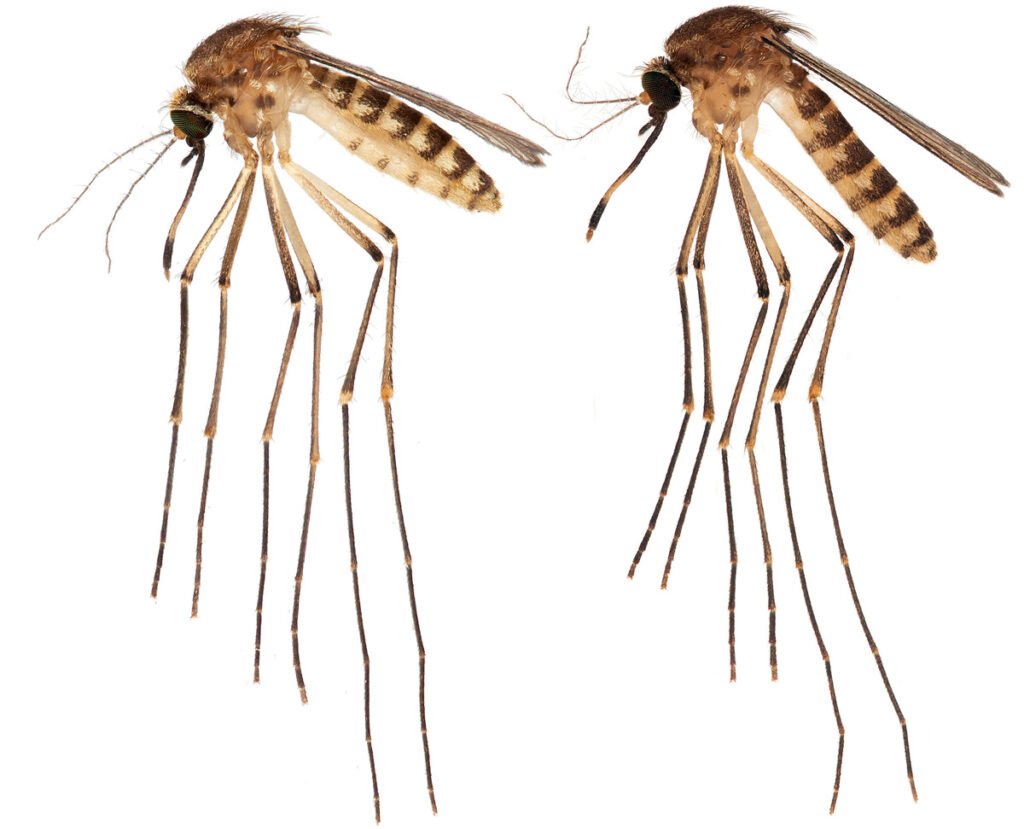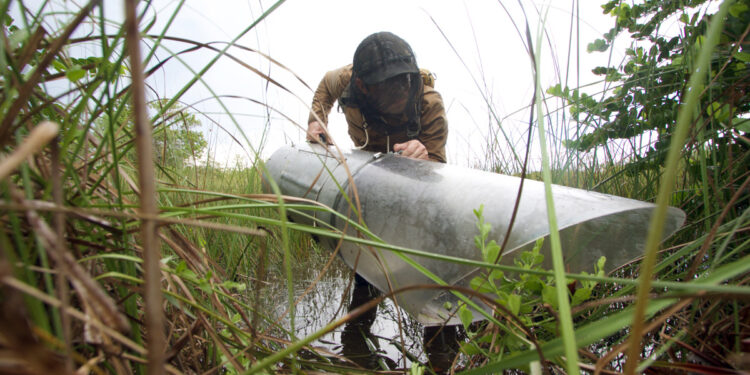Only time will tell if Indian River County will be home to a new mosquito species reported in at least three southern counties in Florida.
Scientists are concerned about the rate of new mosquitoes arriving in Florida and their potential to transmit mosquito-borne diseases.
The scientific name of this mosquito is “Culex lactator,” according to a new study published in the Journal of Medical Entomology. This species was first discovered in Miami-Dade County in 2018 by faculty at UF/IFAS Florida Medical Entomology Laboratory (UF/IFAS FMEL) while they hunted for other nonnative mosquitoes.
Since then, thriving populations have been recorded in Miami-Dade, Collier and Lee counties. Scientists are concerned there hasn’t been enough research on the species and their potential disease risk.
“There are about 90 mosquito species living in Florida, and that list is growing as new mosquito species are introduced to the state from elsewhere in the world,” said Lawrence Reeves, lead author of the study and an assistant professor and mosquito biologist at the UF/IFAS research center in Vero Beach.
Mosquitoes are among the most studied insects because they can transmit diseases. However, there are large gaps in knowledge, said Reeves.
“That’s particularly true for species from the tropical forests, where mosquitoes are diverse and understudied,” he said. “Introductions of new mosquito species like this are concerning because many of our greatest mosquito-related challenges are the result of nonnative mosquitoes, and in a case like this, it’s difficult to anticipate what to expect when we know so little about a mosquito species.”
Globally, there are more than 3,600 types of mosquitoes. So when a new mosquito is found in Florida, it could be any of these species. Reeves and his team used DNA analysis and other tools to discover a new mosquito species and identified it as Culex lactator.
Mosquito-transmitted diseases
Culex lactator is found in Central America and northern South America and is a member of the Culex group of mosquitoes. This group includes important species that transmit the West Nile and St. Louis encephalitis viruses, but it is unclear whether Culex lactator will contribute to the transmission of these viruses in Florida.
Every year, Florida faces challenges from mosquito-transmitted diseases like West Nile virus, eastern equine encephalitis virus, dengue virus, chikungunya virus and others, explained Reeves.
“It’s too early to know whether Culex lactator will exacerbate these challenges, but the implications are often difficult to predict because not all mosquito species are equally capable of transmitting a particular virus or other pathogen,” said Reeves.
Only certain mosquito species transmit each mosquito-borne virus, said Reeves.
“We need to be vigilant for introductions of new mosquito species because each introduction comes with the possibility that the introduced species will facilitate the transmission of a mosquito-transmitted disease,” he said.
Culex lactator
The initial specimens of Culex lactator were collected in 2018 from rural sites in southern Miami-Dade County, south of Florida City, followed by additional adult and immature specimens collected through 2022 in the same locations. Each set of mosquitoes were collected from traps set by associate professor Nathan Burkett-Cadena, doctoral student Kristin Sloyer and Reeves while looking for other recently introduced mosquitoes.
In 2022, scientists with the Collier Mosquito Control District and Lee County Mosquito Control District found Culex lactator in their counties, indicating that Culex lactator has likely spread from its initial point of introduction.
Currently, Culex lactator is known to live in Collier County – south and west of Naples – Lee County, west of Fort Myers, and in the Homestead area of Miami-Dade County, though it may have also spread elsewhere in the state, including Indian River County.
“Culex lactator is physically similar to mosquito species already known from Florida. It looks like other more common mosquito species,” said Reeves. “Because of that similarity, the presence of Culex lactator in an area can be easy to miss.”
Reeves and his team stress it’s important to monitor for Culex lactator as it is likely to spread within the state into areas that are environmentally suitable. Florida’s proximity to the tropics and climate conditions make it ideal for nonnative mosquito species. Scientists are concerned about the rate and frequency of new species establishing in Florida. As many as 17 nonnative mosquito species are established in the state.

Nonnative mosquito species
Researchers stress that the detections of nonnative mosquito species are increasingly frequent, with 11 of 17 nonnative species first reported in the past two decades, and six of these 17 detected in only the past five years, said Reeves.
The mosquitoes Aedes aegypti, Aedes albopictus, and Culex quinquefasciatus – among the most important disease vectors in the United States – like Culex lactator, are nonnative species, introduced from the tropics.
“Climate change may improve the chances of tropical mosquito species becoming established once they make it to Florida if the state becomes warmer,” adds Reeves.
“Increasing storm frequency and intensity could also blow in more mosquitoes and other species from the Caribbean, Central America and elsewhere.”
How to reduce mosquitoes near your home
In September 2022, Sherry Burrough, executive director of the Indian River Mosquito Control District, spoke at a luncheon hosted by the Exchange Club of Sebastian, advising homeowners on how they can help reduce mosquitoes.
The first thing to do is eliminate areas where they thrive, such as water. For example, don’t leave anything near your home that collects water. Burroughs said these are called “container habitats.”
Bird baths should be empty during summer as they are considered container habitats. Bromeliad plants that hold water can also be a habitat for mosquitoes. Discarded cans, bottles, used tires, clogged roof gutters, and leaky faucets can also be habitats for mosquitoes. Areca palm fronds can hold water when they are lying on the ground.
When homeowners keep water out of outdoor objects, it can help reduce the number of mosquitoes.
Mosquito repellents work, but make sure you use the right kind. The CDC revised their recommendations on mosquito repellents and added two repellents, in addition to DEET: Picaridin [1-Piperidinecarboxylic acid, 2-(2-hydroxyethyl)-, 1-methylpropylester] and Oil of Lemon-Eucalyptus [p-menthane 3,8-diol (PMD)].
The oil of lemon eucalyptus has not been tested against mosquitoes that spread malaria and some other diseases. In addition, the label for the oil of lemon eucalyptus specifies that it should not be used on children under three years of age.







